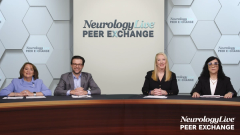
Comparison of Biosimilar Products and Reference Products
Clinical experts discuss differences and similarities between biosimilars and reference products.
Episodes in this series

Amy Perrin Ross, APN, MSN, CNRN, MSCN: Aliza, if we could move on to, talk about how biosimilars do compared with their reference products.
Aliza Ben-Zacharia, PhD, DNP, RN, ANP-BC, FAAN: Thank you, Amy. This is a very important question because it will be important to all the clinicians and health care providers who take care of patients with MS [multiple sclerosis]. As Pat mentioned earlier, there are other diseases, like rheumatoid arthritis, ulcerative colitis, [or] Crohn disease that [have] been using biosimilars. When we think about biosimilar and biologic products, you think about the similarities and the differences. When you think about similarities, I think one of the important principles [is] that they are developed [in] a very rigorous process that takes years. When you think about biosimilars, I think they are being developed within 1 to 2 years. But the literature says that biosimilars are produced and developed in about 5 to 9 years, which is a long time with high cost. Of course, we know about biologics that are produced and developed [over] many years with high cost, and they are both large molecules. The aim is to have, and I think John, you mentioned it earlier, a similar efficacy, similar safety, and similar immunogenicity.
There are some differences between the two. Biosimilars may include some different inactive ingredients. They have to have a similar active [ingredient], but they may have some [different] inactive ingredients, and different packaging, different appearance,different brand name, of course, which will provide perhaps patients with more options but a similar mechanism of action. The second, I would say, difference between the two is the regulatory path that they go through. They both go, again, through a rigorous process, but the biosimilar process may be more streamlined because they have to show clinical equivalence to an already approved drug, to the biologics, while the biologics, as we all know, have to prove efficacy and safety compared to a placebo-controlled drug.
Amy and Pat just talked about the cost, and I don’t know whether to say unfortunately or fortunately, there is a decrease, and we save often millions of dollars with the biosimilars. However, they are less expensive by about 10% to 20% in the United States; in Europe, it’s about 20% to 35%. So, yes, cost goes down. I was so impressed to see, for example, John you mentioned rituximab, there was a decrease in 2019 and 2020, there was a savings of $3 million from using biosimilars, which is impressive.
Amy Perrin Ross, APN, MSN, CNRN, MSCN: I think it’s incumbent upon all of us in the health care arena to do what we can to rein in costs. If that means using biosimilars, then that’s fine. But I think, again, part of what our challenges are, first of all, in preparation for this discussion today, I spent some time learning about the differences and educating myself because I was not fully up to snuff on all the answers to the biosimilar issues. But it made me think about the impact on what that’s going to mean for my practice, [and] what that’s going to mean for my patients. If I can implement some cost savings, even if it’s 10% to 20%, does that then allow someone else to use that additional 10% to 20% to offer things that others may not have had resources for?
Looking at the CMSC [Consortium of Multiple Sclerosis Centers] and the whole comprehensive care model of approaching care for people with MS, I think whatever we can do in terms of cost savings is something certainly that will be put to good utilization by those of us in clinical practice. Aliza, can you talk a bit about how biosimilar equivalence can be proven?
Aliza Ben-Zacharia, PhD, DNP, RN, ANP-BC, FAAN: I think this is a great question, Amy, because it is challenging to demonstrate biosimilar equivalence. You need to do it by providing some comparative data about, for example, the pharmacokinetics of the biosimilar drug, showing the movement of the drug in the body, or pharmacodynamics, which show how the body responds to different medications. We mentioned already safety data, efficacy data, and immunogenicity profile. By doing that, you can prove and hopefully demonstrate clinical equivalence of the biosimilar to the reference drug.
Something that’s interesting, when I looked at the literature and the study, there were some remarks in reports about biosimilar studies, because there you need [a smaller] sample size [to] show clinical equivalence as opposed to large [sample sizes] that we use in biologic studies. So, the sample calculation is different. However, I think one of the studies had more than 500 patients, which is a good size, although it’s not 30 or 100, which is impressive as well.
I think to answer your second question about why it’s challenging to prove, what we see in biosimilars is that there are some minor structural and manufacturing differences that can affect efficacy, safety, and immunogenicity. It’s something we need to think about, the toxicity profile and safety of medication, with some of the minor differences. As I mentioned, the inactive ingredients may affect immunogenicity. Other variables that may play a role, that can be sometimes challenging to prove, are a different patient profile, different genetic makeup, different analysis…the health history of the patients and how they respond to certain medication and their immune status. That will be important to take into account when we think about how to show bioequivalence of the biosimilars.
The last thing I would like to mention is that sometimes we use animal models in research study, and it’s hard to predict based on animal studies data related to humans. We always laugh when we think about humans don’t have mice. It’s something we need to think about. I looked at one systematic review and meta-analysis in 2023. It was a large study, and it was published in JAMA Network Open by Dr Bruna de Oliveira Ascef, MD, Phd. They showed that biosimilars of RA [rheumatoid arthritis] medication, and they talked about adalimumab and infliximab, they showed in their study that they were clinically equivalent compared with the reference biologic. I think we can think about how to mimic some of it in MS and do those studies and show some similarity, which I think will provide more options to patients and more access to care, as Pat mentioned.
Amy Perrin Ross, APN, MSN, CNRN, MSCN: I think we can certainly, as we’re talking to our patients and trying to make the case for biosimilar use when it’s available in MS, we can reference those studies. We can reference the fact that diseases like rheumatoid arthritis are also immune-mediated diseases. If we’ve shown that efficacy and that bioequivalence in diseases such as that, there’s every reason to expect we would see it in MS as well.
Transcript Edited for Clarity
Newsletter
Keep your finger on the pulse of neurology—subscribe to NeurologyLive for expert interviews, new data, and breakthrough treatment updates.
























